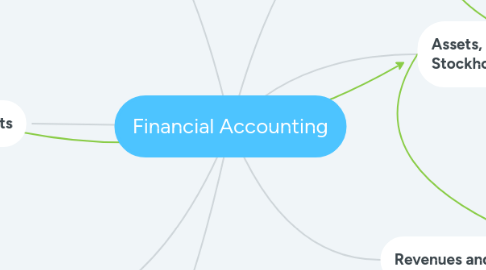Financial Accounting
by Aaron Yeakey


1. Financial Statements
1.1. Balance Sheet: Statement of the financial position of a business that lists the assets, liabilities and owner's equity at a particular point in time. Illustrates a business's Net Worth.
1.2. Income Statement: Statement that shows the profit and loss of a company.
1.3. Statement of Cash Flows: Statement of data regarding all cash inflows and outflows that a company receives during a given period of time.
1.3.1. Operating Activities
1.3.2. Investing Activities
1.3.3. Financing Activities
2. Transaction: The exchange and conduction of business containing monetary value between a business and its' customers.
3. Financial Reporting Issues
3.1. Multiple uses of the financial account reports.
3.2. Alternative approaches to establishing accounting measurement and reporting standards.
3.3. The role of the independent audit of a business firm's financial statements.
3.4. The role of the financial reporting in an efficient capital market.
4. Obtaining Financing
4.1. Owner's provide funds to a firm and in return have a claim on the firm's future increases of value.
4.2. Creditors provide funds to a firm and in return typically require periodic payments including interest fees.
5. Accounting: Informational science that is used to collect and organize financial data for organizations and individuals.
5.1. Accounting is important for everyone whether you are a large business or just using it for personal financial reasons. In or to put ourselves in the best financial position possible, we need accounting.
6. Assets, Liabilities and Stockholder's Equity
6.1. Assets: Property owned by a person or company, regarded as having value and available to meet debts, commitments or legacies
6.2. Liabilities: Something for which a business it responsible for, especially a debt or financial obligation.
6.2.1. Though similar to each in the fact that they both imply the amount of responsibility being held. Liabilities do NOT take into account the assets, as where stockholder's equity is the responsibility for both.
